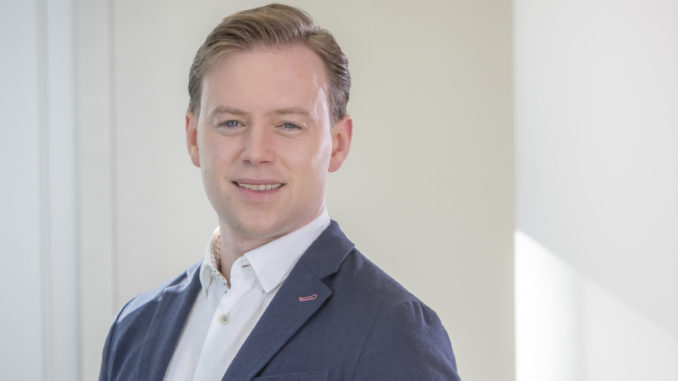
On any given day at Irish law firm Matheson, Tom Connor, Head of the Digital Services Group (DSG), may be found examining a range of internally sourced ideas, triaging them and helping to select the best ones to take forward, among the other things he’s working on.
The ideas come from staff members across the Dublin-based firm – which also has offices in New York, San Francisco and Palo Alto – and are submitted via an online form.
The DSG was launched last year and Connor leads the dedicated multi-disciplinary team of 17 professionals that includes software developers, lawyers, legal solutions consultants, project managers, document automation specialists and business analysts.
These operate across three divisions: client solutions, legal process optimisation and digital innovation. And, part of their work is also bringing to life internally sourced ideas.
Connor explains that in one instance a senior associate in the tax department submitted an idea to make an internal operational process more efficient through the use of automation.
‘We [ensured] that it made sense, and discussed whether or not it was achievable, whether or not we had the resources to do it, whether or not we had the budget, all the things you take into account when you decide whether or not to pursue an idea,’ he says. In this case the idea was accepted and is now being implemented by the group.
And how do they keep the ideas flowing, are there dry months?
‘There can be,’ he explains, adding that the firm runs digital workshops to educate staff about the technologies it already has and what it can offer clients.
‘I think this education project is what gives rise to the ideas. The secret to success is if you can educate people in layman’s terms about what technologies we have and what they can do, that leads to ideas that actually flow through to our innovation strategy.’
Another example of a project the digital services team engaged with was when a partner and their client wanted to explore the idea of having a cloud-based collaboration solution that combined document management with spend management.
‘We had a fantastic co-creation session where the client was involved,’ Connor explains, ‘once they were happy with the solution, we deployed the cloud-based solution within their legal team.’
And this is what Connor believes innovation is all about: ‘[It’s] the ability to generate and execute ideas that provide value to an organisation, or its clients.’
It may not be not that glitzy, but it has a solid operational impact that helps with efficiency and improved transparency. And in this case such projects clearly help to forge strong links between the firm and the client through taking a collaborative approach.
The Uncertainty Principle
Connor adds that doing new things is not always easy, as one needs to be comfortable with uncertainty.
‘I’m a believer that successful innovation is achieved by combining creativity with design, and then structuring that,’ he adds.
And naturally, creativity is open-ended and often unpredictable, so you can’t always know where you are going to end up.
He stresses that you need to engineer a ‘culture of creative confidence’ and then apply the principles of service design to execute on those ideas.
Which leads us to the end of this quick interview and the obligatory question: Is the use of legal technology actually reducing the cost of delivering legal services?
To which Connor responds: ‘The routine, process driven legal work is certainly being done faster and perhaps more accurately with the assistance of technology enabled solutions, so I think [it is] in that regard.’
However, he concludes: ‘The more strategic and complex work the firm does is not affected in the same way.’
–
Interview by Irene Madongo